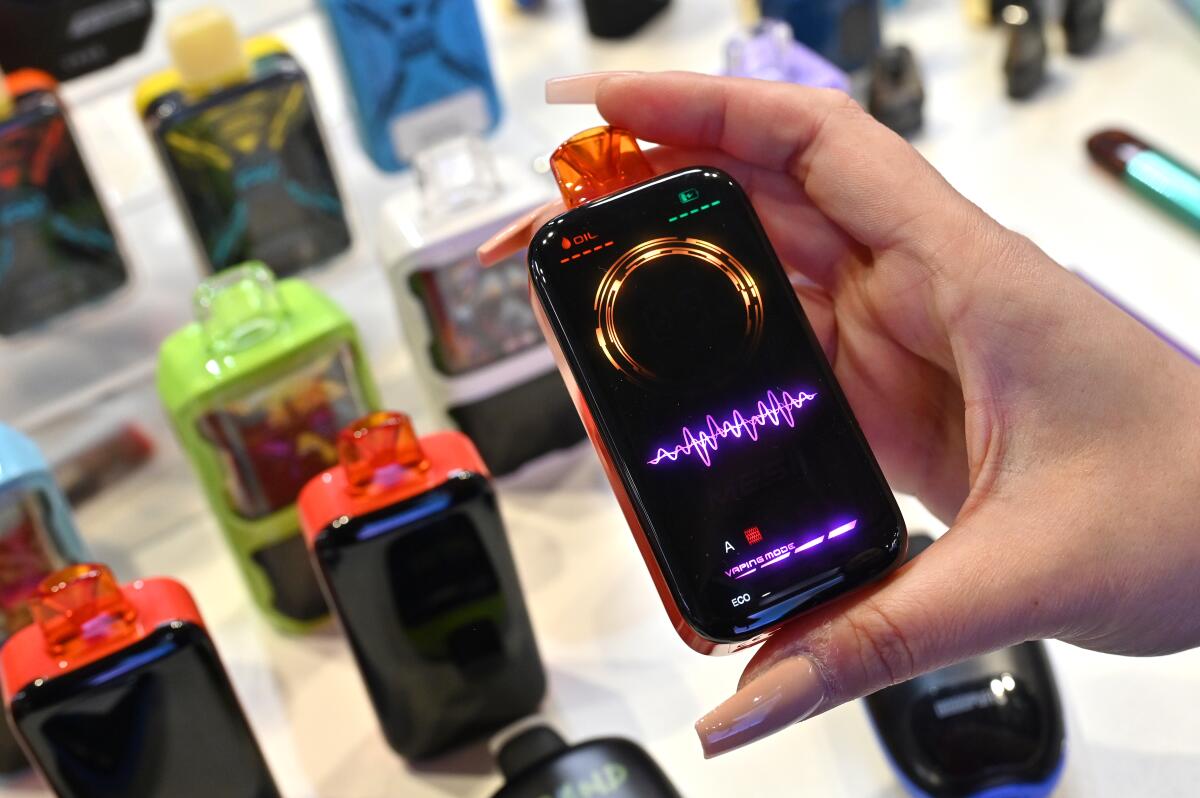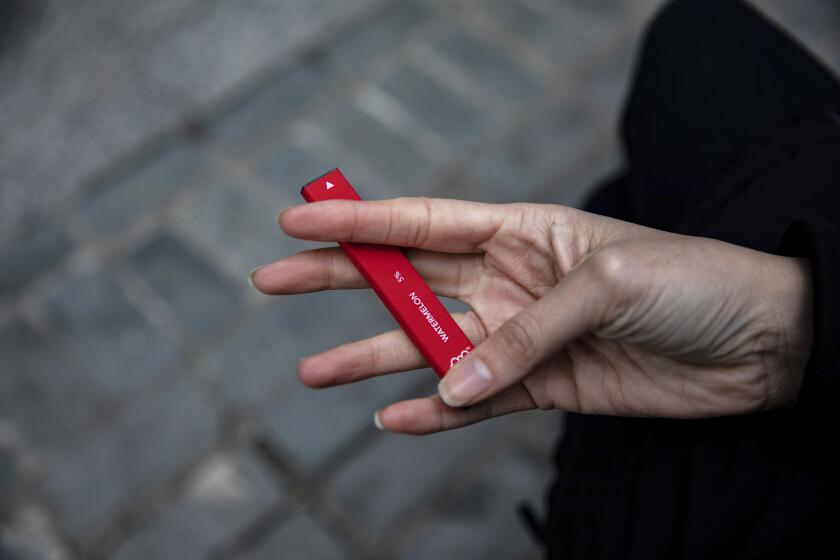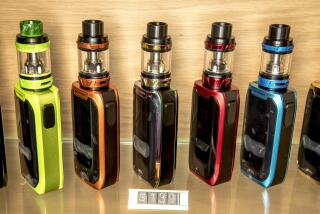‘Smart vapes’ featuring video games could lure youths to nicotine addiction, UC Riverside experts say

- Share via
Introduced as battery-powered sticks that emit nicotine-infused vapor, vape pens have transformed into increasingly sophisticated entertainment devices.
And that, researchers say, is a potentially huge problem.
Disposable vapes gained small illuminated displays last year, typically to show how much battery life remained. In about six months, though, the displays grew to the size of a flip phone screen and came equipped with retro games similar to “Pac-Man” and”Tetris” — on a product that costs less than $20.
The speed at which vapes advanced to include an interactive display, as well as the devices’ potential appeal to young people, is raising concerns about nicotine addiction among teenagers, UC Riverside researchers Man Wong and Prue Talbot say.
Talbot said the researchers had never seen a tobacco product “so clearly geared toward young people.”
The U.S. surgeon general has called on Congress to require warning labels on social media platforms similar to those mandatory on cigarette boxes.
Talbot and Wong are members of a team of scientists who research tobacco-related diseases, electronic cigarettes and the toxicological effects of nicotine.
The team monitors new vape products that hit the market, and the emergence of what they call “smart vapes” took the researchers by surprise.
The catalyst for this new generation of vapes, Wong said, was Geek Bar Pulse, a vape that had the first full-length screen, according to the Geek Bar website. The larger screen displayed battery life, the amount of vape juice remaining and an animated spaceship.
What came next was a viral tweet of a photo of a “Pac-Man”-like game on the Craftbox V-Play 20K disposable vape.
In a Zoom video with The Times, Wong held up the attention-grabbing smart vape. When he turned it on and selected “game mode,” the nearly 2-inch screen gave him the option of playing three games styled after “Pac-Man,” “Tetris” and “JetFighter.”
This is just one of the vape products that have gaming capabilities. Another is the Ursa Pocket Pod Kit by Lost Vape, which has a puff count competition and the ability to display your ranking on Lost Vape social media accounts.
Jonathan Haidt’s “The Anxious Generation” feeds the latest technology panic. But the research says something different.
Wong said smart vapes use their gimmicks to entice people in the same way that a slot machine might light up and make sounds. But the vapes prey on three potential addictions, Wong and Talbot said: screen-time obsession, gaming disorder and nicotine dependence.
Researchers still aren’t sure what the health effects of vapes are. In the absence of clear guidance, users will generally assume the devices are not as bad as cigarettes “because they don’t have as many chemicals,” Talbot said.
In truth, she said, vapes and e-cigarettes “have different chemicals, and some of those chemicals are toxic, and we don’t know exactly what the long-term effects are.”
What is known is that vaping involves inhaling “e-juice” in the form of an aerosol that contains flavorings such as diacetyl — a chemical linked to serious lung disease — along with nicotine and other chemicals, according to the American Lung Assn.
You can’t buy nicotine-loaded vapes in California unless you’re 21 or older. But that doesn’t stop younger people from getting hold of vape products.
The California Department of Public Health surveyed more than 31,000 high school students last year for the California Youth Tobacco Survey and found that 21.6% of them reported trying a tobacco product and 7.3% currently used tobacco.
The latest government study on teen vaping suggests there’s been little progress in keeping e-cigarettes out of kids’ hands.
The most commonly used product among the high school respondents was vapes.
A majority of respondents said it was easy to obtain vapes from a store, through the internet and from someone else, according to the report.
Lost Vape did not immediately respond to The Times’ request for a comment regarding the accusation that its product is geared toward youths.
The UC Riverside researchers hope that the products will get on the Food and Drug Administration’s radar and be regulated.
“In the long term, increasing awareness of how vapes can evolve in short periods of time can increase surveillance and monitoring to ensure products that are targeting youth are swiftly removed from the market,” Talbot said.
More to Read
Sign up for Essential California
The most important California stories and recommendations in your inbox every morning.
You may occasionally receive promotional content from the Los Angeles Times.














